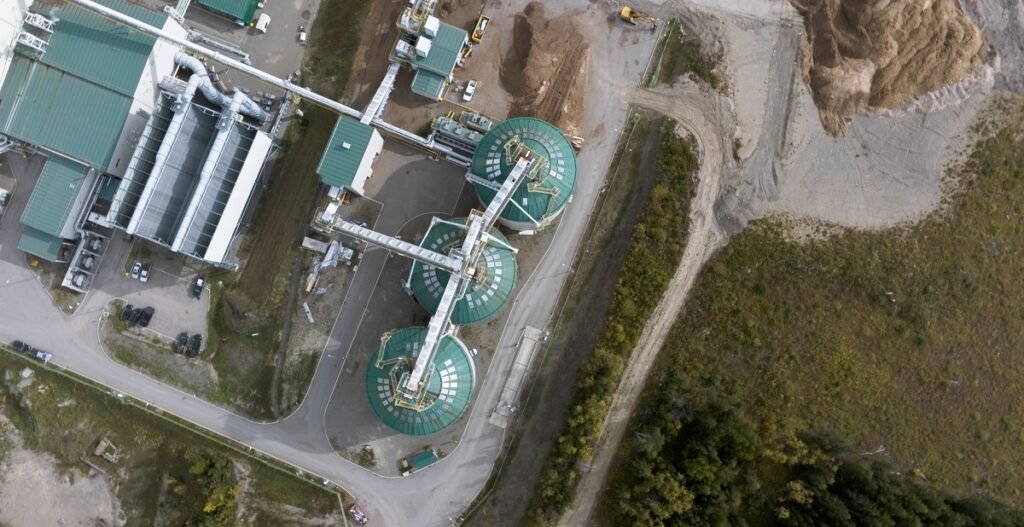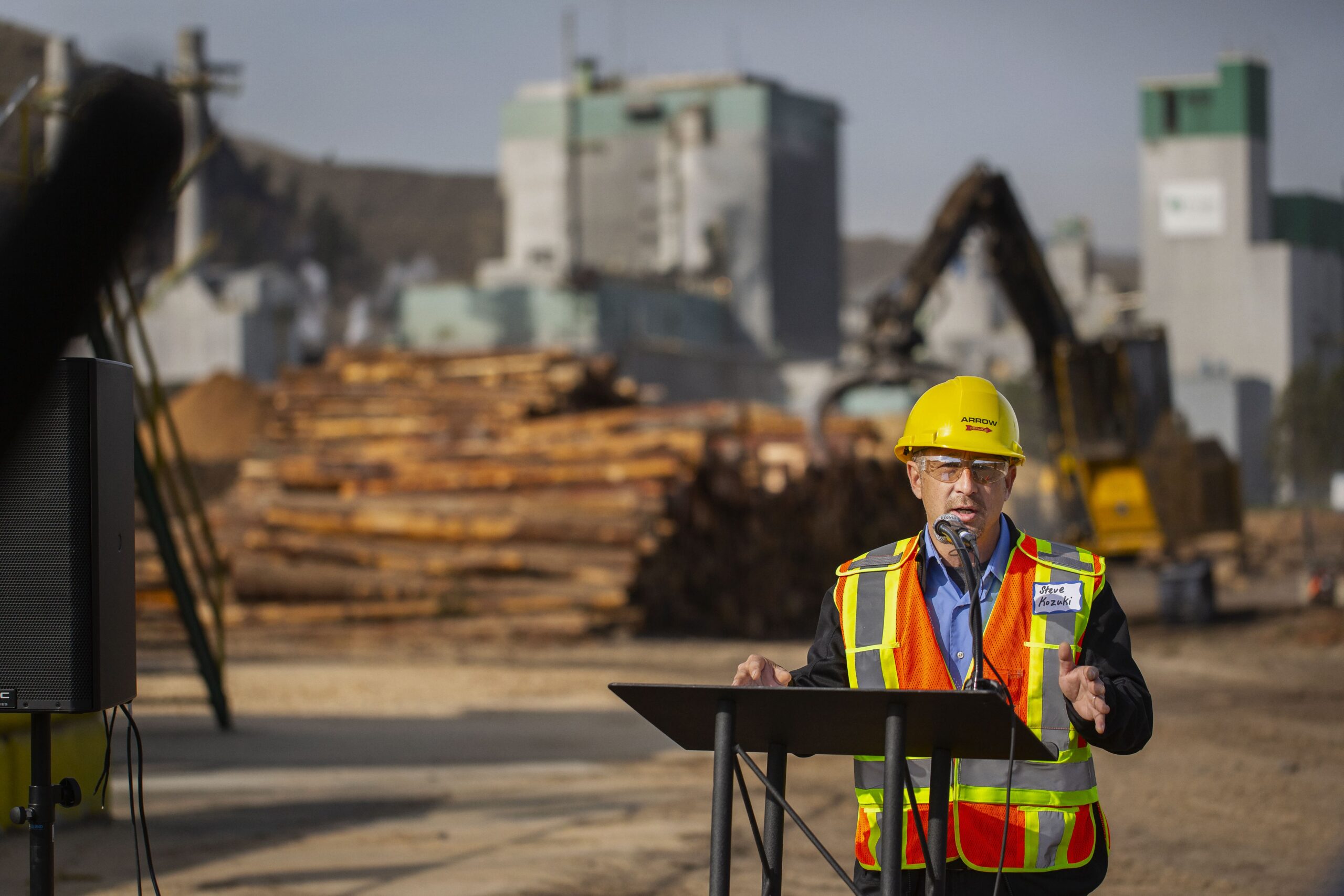Forestry Projects to Help Utilize Waste Wood or Mitigate Wildfire Risk
Omineca Region, B.C. – At a press event in Kamloops, the executive director of the Forest Enhancement Society of BC (FESBC), Steve Kozuki, announced 42 newly funded forest enhancement projects. These projects throughout the province of B.C. will either assist with the delivery of uneconomic forest fibre to pulp and pellet mills or green energy facilities or will help communities reduce their wildfire risk. Among these projects, six projects are located in the Omineca region.

Photo credits: Greg Kilba, Arrow.
“The funding provided by the Forest Enhancement Society of BC is a testament to the Government of British Columbia’s drive to foster environmental sustainability and community wildfire risk reduction. Their support of these transformative projects demonstrates their commitment to helping communities reduce their risk of catastrophic wildfire events and transforming waste wood into green energy and sustainable products. They are taking action on climate change while at the same time promoting job growth and community resiliency throughout our province,” said Kozuki.
These newly funded projects come as a result of the $50 million given to FESBC earlier this year by the Ministry of Forests to boost fibre supply by utilizing uneconomic fibre and reduce wildfire risk while also supporting workers and communities.
“Our forests have endured some very difficult years of late. Devastating wildfires, pine beetle epidemics and the effects of climate change have stressed the environment more than ever before, with direct impacts felt by rural and First Nations communities,” said Bruce Ralston, Minister of Forests. “By using burned or damaged wood, projects around B.C. are providing the forest industry with fibre and are actively increasing our resilience to future wildfires.”

Photo Credit: Tiffany Christianson Photography.
The six projects in the Omineca region are:
- Canfor Pulp’s Incremental Haul Program for Pulplog: $3,000,000 in FESBC funding to transport low value logs located outside of the current economic range to the Prince George Pulp and Paper Mill, rather than burned.
- Prince George Fibre Recovery 23/24: $281,250 in FESBC funding to clear a stand that was damaged by Mountain Pine Beetle and transport the low value fibre to pulp mills in Prince George. The stand will be replanted afterward.
- Northern Interior Grinding Fibre Utilization: $1,034,454 in FESBC funding to transport fibre outside the economic radius to BioNorth Energy LP in Fort St. James.
- Northern Interior Grinding Fiber Utilization #2: $559,856 in FESBC funding to grind wood waste piles to then be shipped to BioNorth Energy LP in Fort St. James.
- East Fraser Fibre-Increased Utilization of Uneconomical Fibre: $780,997 in FESBC funding to ship low value fibre harvested under a Mountain Pine Beetle Salvage License to the chip plant in Mackenzie and then onto pulp mills in Prince George.
- SP22DPG-720-YR3: $96,190 in FESBC funding to clear a stand that was damaged by Mountain Pine Beetle and transport the low value fibre to pulp mills in Prince George. The stand will be replanted afterward.
These initiatives will utilize waste wood to produce green energy and sustainable products, reducing our reliance on fossil fuels and plastics that have long dominated our everyday lives. Other projects currently funded by FESBC will reduce wildfire risks for communities.
“With challenges such as insect epidemics, devastating wildfires, and the need to conserve old growth and wildlife habitat, it is crucial to find innovative solutions,” said Kozuki. “The declining timber supply has amplified the importance of utilizing leftover forest fibre that would have otherwise gone to waste.”
Of the 42 new projects funded throughout the province, 24 projects have direct First Nations involvement, while eight have some First Nations involvement.
ADDITIONAL QUOTES:
Canfor’s Pulp Incremental Haul Program for Pulplog
Kevin Edgson, President & CEO, Canfor Pulp: “We appreciate the grant funding the Forest Enhancement Society of BC awarded for our Incremental Pulplog Haul Program project. This funding allows Canfor Pulp to access and purchase pulp logs that are outside the economic radius we can normally operate within. It is particularly important at a time when the timber supply and the availability of sawmill residual chips is shrinking. This funding will provide assistance to harvesting and hauling contractors, enabling them to supply pulp facilities in nearby communities. We will be able to transform low-value logs, which would otherwise be burned, into higher value-added products. By doing so, it will help minimize waste, pollution and carbon emissions.”
East Fraser Fibre-Increased Utilization of Uneconomical Fibre
Patrick Glazier, Owner of the East Fraser Fiber Co. Ltd. (EFF) explained that EEF had a long history of utilizing uneconomical residual fibre. In 1990, EFF built a whole log chipper in Mackenzie, B.C. to ensure we could chip small tops and low-value logs that could not be manufactured into lumber. “Maximizing the fibre used from every tree is simply the right thing to do.”
FESBC funding will partially offset the transportation costs of hauling uneconomical residual fibre from harvested mountain beetle-killed stands, that are located outside the viable economic range. This collaborative approach of utilizing fibre will minimize fuel loading in slash piles and decrease open burning used to reduce the fire hazard. EFF’s pulp program will contribute to the reduction of carbon emissions, increase jobs, and economically benefit the forest-dependent community of Mackenzie.
FESBC would like to gratefully acknowledge the financial support of the Province of British Columbia through the Ministry of Forests.
